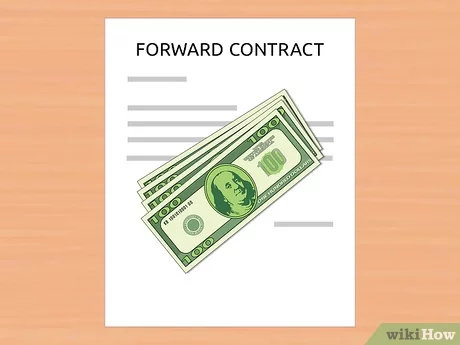Navigating the Financial Landscape: A Comprehensive Guide on How to Account for and Negotiate Forward Contracts

Introduction:
In the dynamic world of finance, businesses often face the challenge of managing and mitigating risks associated with currency fluctuations. Forward contracts emerge as powerful tools to navigate this volatility by allowing entities to lock in future exchange rates. Understanding how to account for and negotiate forward contracts is crucial for businesses seeking to optimize their financial strategies and safeguard against potential currency-related losses. In this comprehensive guide, we will delve into the intricacies of forward contracts, exploring the accounting principles involved and providing insights into effective negotiation strategies.
Understanding Forward Contracts:
A forward contract is a financial instrument that enables parties to fix the exchange rate for a future date, allowing them to hedge against potential currency fluctuations. These contracts are customizable, allowing businesses to tailor agreements based on their specific needs, such as the amount, currency pair, and maturity date. To successfully navigate forward contracts, businesses must grasp both the accounting principles governing these instruments and the key negotiation strategies to secure favorable terms.
Accounting for Forward Contracts:
- Initial Recognition: When a forward contract is entered into, it is initially recognized on the balance sheet at fair value. Fair value is the difference between the contracted forward rate and the current market rate at the contract’s inception.
- Subsequent Measurement: The fair value of the forward contract is revalued at each reporting period. Changes in fair value are recognized in the income statement, creating gains or losses. This process continues until the contract is settled.
- Hedging Relationships: Forward contracts are often used as hedging instruments to mitigate currency risk. In such cases, accounting treatment depends on whether the forward contract qualifies for hedge accounting. If so, changes in fair value can be recognized in equity, providing a more stable financial reporting outcome.
- Settlement: When the forward contract reaches maturity, settlement occurs. At this point, the actual exchange of currencies takes place at the predetermined forward rate. Any gains or losses on the forward contract are realized and recognized in the income statement.
Negotiating Forward Contracts:
- Clearly Define Objectives: Before entering into negotiations, businesses must clearly define their currency risk management objectives. Whether the goal is to minimize costs, secure budget certainty, or protect profit margins, a well-defined strategy guides the negotiation process.
- Understand Market Conditions: Knowledge of prevailing market conditions is essential. Stay informed about current exchange rates, economic indicators, and geopolitical events that may impact currency markets. This understanding empowers negotiators to make informed decisions and anticipate potential risks.
- Work with Reputable Counterparties: Choosing reputable and reliable counterparties is crucial. Evaluate the financial stability, reputation, and track record of potential partners or financial institutions involved in the forward contract. Working with established entities helps mitigate counterparty risk.
- Customize Terms to Suit Needs: Forward contracts are highly customizable. Negotiate terms that align with the specific needs and risk profile of the business. This includes determining the contract amount, currency pairs involved, maturity date, and any additional features such as flexible settlement options.
- Consideration of Premiums and Discounts: In some cases, negotiating premiums or discounts on the forward rate may be possible. Premiums may be paid for a forward rate above the current spot rate, while discounts may offer a more favorable rate. Consider these factors based on market conditions and the business’s risk tolerance.
- Evaluate Hedging Costs: Assess the overall costs associated with hedging through forward contracts. While these contracts provide protection against adverse currency movements, there may be associated fees, commissions, or bid-ask spreads. Evaluate these costs to ensure they align with the budget and expected benefits.
- Monitor and Adjust: Currency markets are dynamic, and business conditions may change. Regularly monitor the effectiveness of the forward contract in mitigating risk. If necessary, be prepared to adjust or renegotiate terms to adapt to evolving circumstances.
- Legal and Regulatory Considerations: Be mindful of legal and regulatory considerations when negotiating forward contracts. Understand the legal implications of the contract, including termination clauses, dispute resolution mechanisms, and compliance with relevant financial regulations.
Conclusion:
Effectively accounting for and negotiating forward contracts requires a comprehensive understanding of financial principles, market dynamics, and risk management strategies. Businesses that engage in international trade or have exposure to currency fluctuations can benefit significantly from incorporating forward contracts into their financial toolkit. By mastering the accounting principles and adopting savvy negotiation strategies outlined in this guide, organizations can navigate the complex terrain of currency risk with confidence, ultimately optimizing their financial outcomes and bolstering their resilience in the face of economic uncertainties.




